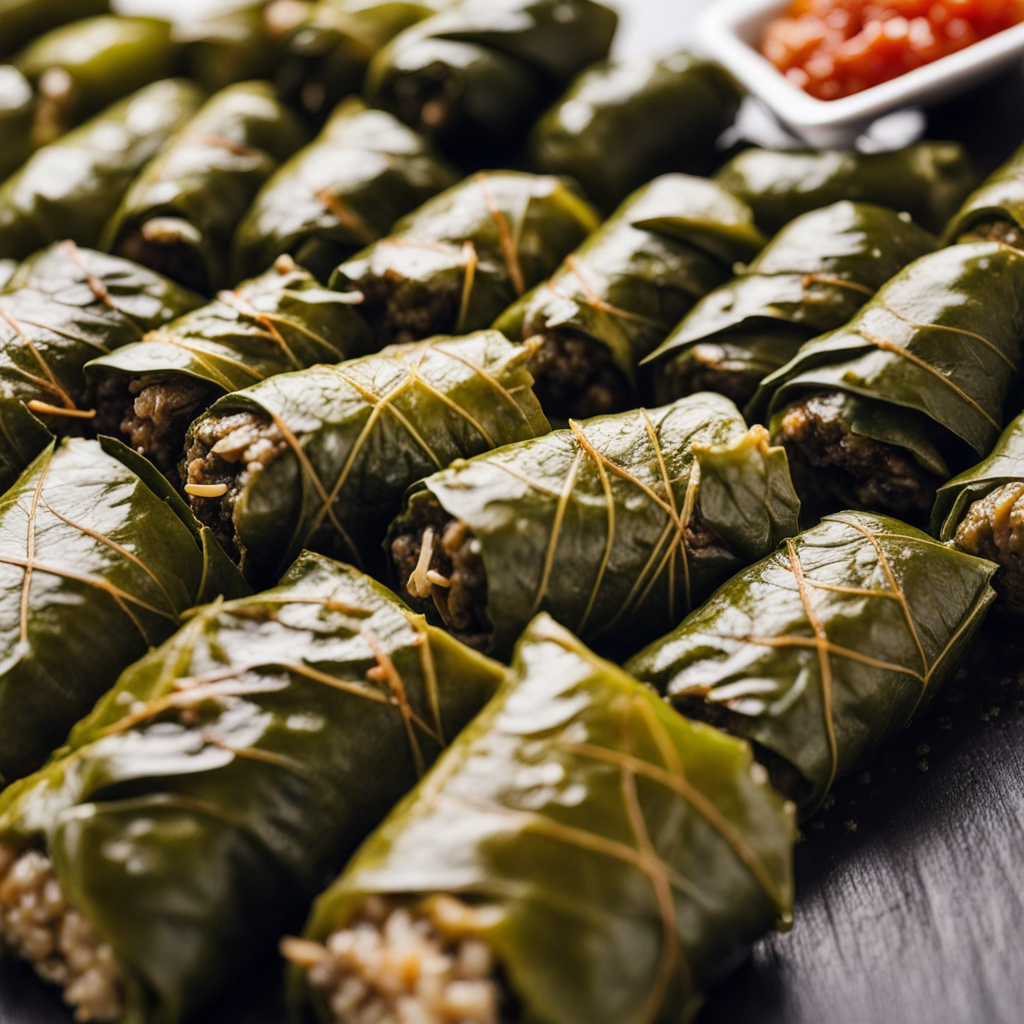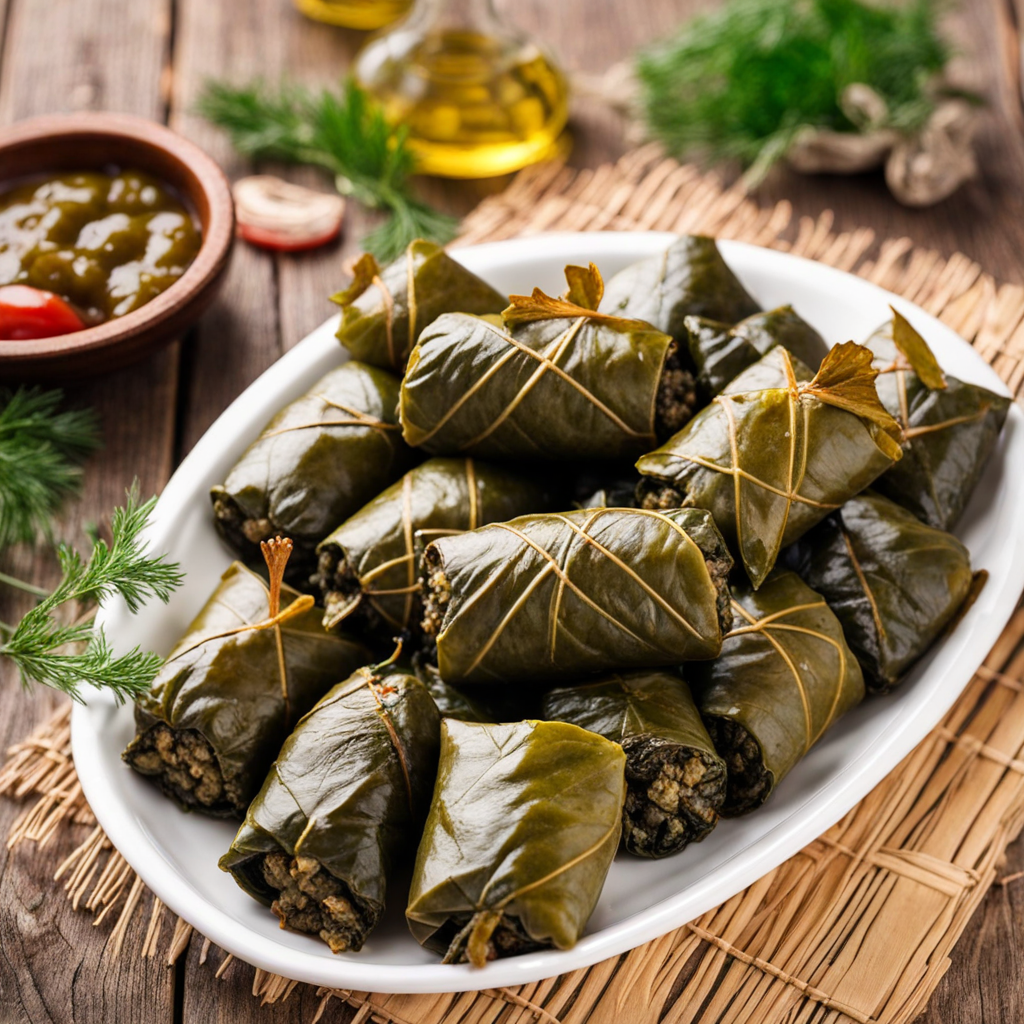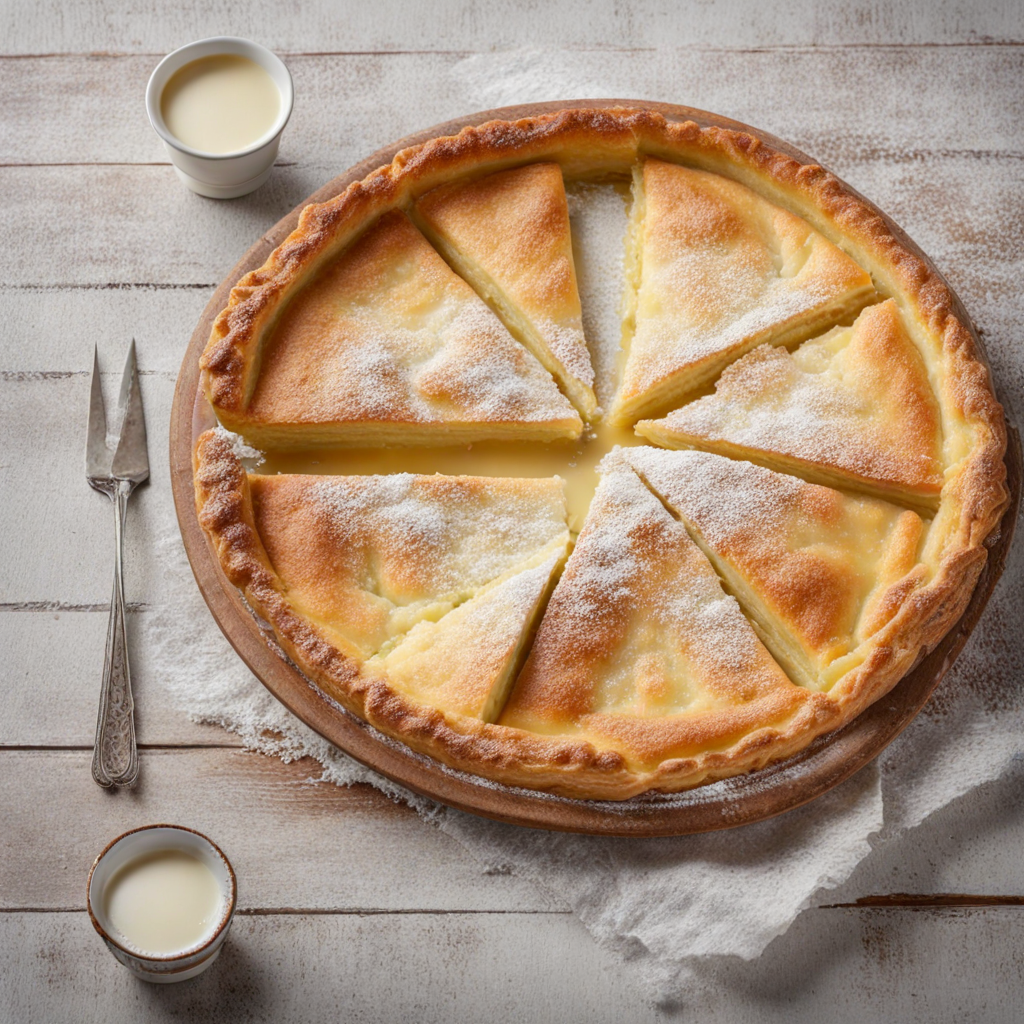Dolmades
Dolmades, a delightfully aromatic dish originating from Cyprus, consists of tender grape leaves enveloping a savory filling that often includes a blend of rice, fresh herbs, and spices. The grape leaves, typically picked in the early summer when they are young and pliable, lend a subtle tanginess that complements the filling beautifully. Common herbs such as dill, parsley, and mint bring freshness and complexity to the dish, while spices like allspice and cinnamon add a warm depth, making each bite a harmonious explosion of flavors. These delightful parcels are traditionally served at room temperature, making them a perfect appetizer or a light main dish. They are often accompanied by a drizzle of lemon juice or a side of tzatziki, enhancing the overall experience with a zesty brightness. Dolmades can be enjoyed on their own or as part of a larger mezze platter, featuring an array of Mediterranean delights that showcase the rich culinary heritage of Cyprus. Whether you're indulging in them at a local Cypriot restaurant or preparing them at home, Dolmades offer a unique taste of the island's culture and history. Their combination of textures—soft and tender leaves contrasted with a flavorful filling—creates an inviting experience that beckons for another bite. Discovering Dolmades is not just about tasting a dish; it's about embracing the essence of Cypriot cuisine and the warmth of its traditions.
How It Became This Dish
Dolmades: A Culinary Journey Through Cyprus Nestled in the heart of the Mediterranean, Cyprus boasts a rich tapestry of cultural influences, vibrant traditions, and a history that intertwines with the culinary practices of its people. Among the most beloved dishes on the island is 'Ντολμάδες' (Dolmades), a culinary delight that reflects the island's diverse heritage and offers a glimpse into the evolution of Cypriot cuisine. Origins and Historical Roots The word "dolma" derives from the Turkish verb "dolmak," meaning "to be stuffed." While the dish is often associated with Turkish cuisine, its origins can be traced back to ancient civilizations, particularly the Greeks and Romans. The practice of stuffing vegetables dates back centuries, with archaeological findings indicating that ancient Greeks were already preparing stuffed grape leaves as early as the 5th century BCE. In Cyprus, dolmades are particularly associated with the island's complex historical narrative. Over the centuries, Cyprus has been influenced by various cultures, including the Greeks, Romans, Byzantines, Ottomans, and British. Each of these cultures left an indelible mark on the island's culinary practices, and dolmades serve as a testament to this rich confluence of flavors and traditions. Ingredients and Preparation At its core, the dolma consists of grape leaves stuffed with a mixture of rice, herbs, and sometimes minced meat. The dish is characterized by its versatility; ingredients can vary widely based on regional preferences and personal recipes. Common herbs include dill, mint, and parsley, which impart a fresh aroma and flavor. The rice is often combined with tomatoes, onions, and spices such as allspice and cinnamon, which add depth and complexity to the filling. In some variations, particularly in rural areas of Cyprus, the filling may also include pine nuts or currants, adding a delightful sweetness to the savory dish. The grape leaves themselves are usually blanched before being filled, allowing them to become pliable and easier to roll. Once filled, the dolmades are tightly rolled and arranged in a pot, often layered with lemon slices and drizzled with olive oil before being simmered to perfection. The result is a tender, flavorful dish that embodies the essence of Cypriot culinary heritage. Cultural Significance Dolmades hold a special place in Cypriot culture, often served during family gatherings, celebrations, and religious occasions. They are a symbol of hospitality and are frequently prepared for guests, reflecting the island's tradition of welcoming others with generosity and warmth. The act of making dolmades can be a communal affair, where family members come together to prepare the dish, reinforcing bonds and creating memories around the table. In addition to their role as a comfort food, dolmades also carry cultural significance in other ways. They are often associated with the Mediterranean diet, which emphasizes fresh ingredients, healthy fats, and a balance of flavors. As such, dolmades are not just a delicious dish but also represent the region's culinary philosophy, which values sustainability and seasonality. Evolution Over Time The evolution of dolmades in Cyprus is a fascinating reflection of the island's changing socio-political landscape. During the Ottoman period, the dish became further ingrained in the Cypriot culinary repertoire, with local adaptations emerging. The Turkish influence, with its emphasis on spices and intricate flavors, melded seamlessly with Greek traditions, resulting in a unique Cypriot take on dolmades. In the 20th century, as Cyprus faced political turmoil and division, the act of sharing food took on added significance. Dolmades became a symbol of unity among the Greek and Turkish communities, with each group claiming its version of the dish. While the fillings may differ—some opting for meat while others prefer a vegetarian approach—the essence of dolmades as a shared culinary experience remains unchanged. Today, dolmades are celebrated not only in homes across Cyprus but also in restaurants and tavernas, where they are presented as part of a meze platter. This traditional Cypriot way of dining showcases a variety of small dishes, allowing diners to sample a range of flavors and textures. The renewed interest in Mediterranean cuisine has also propelled dolmades into the spotlight, with chefs experimenting with creative presentations and modern twists on the classic recipe. Modern Interpretations With the global culinary landscape evolving rapidly, dolmades have found their way onto international menus, often reimagined for contemporary palates. Chefs are experimenting with fusion flavors, incorporating ingredients such as quinoa, wild rice, or even lentils into the filling. Some have taken a bold step by serving dolmades in innovative ways, such as deconstructed presentations or as part of gourmet tasting menus. Despite these modern interpretations, traditional dolmades remain a staple of Cypriot home cooking. Families continue to pass down cherished recipes, ensuring that the love and labor that goes into making dolmades is preserved for future generations. Each family may have its secret ingredient or technique, adding to the rich tapestry of dolma-making traditions on the island. Conclusion Dolmades are more than just a dish; they are a reflection of Cyprus's history, culture, and resilience. From ancient roots to contemporary adaptations, the journey of dolmades encapsulates the spirit of the Mediterranean and the enduring connection of people through food. As diners savor each bite, they partake in a culinary tradition that celebrates community, heritage, and the simple pleasure of sharing a meal. In a world that often feels divided, dolmades remind us of the power of food to bring people together, transcending cultural boundaries and creating a sense of belonging. So, whether enjoyed at a festive gathering or a quiet family dinner, dolmades will always hold a cherished place in the hearts and homes of Cypriots—a timeless dish that continues to evolve while remaining deeply rooted in tradition.
You may like
Discover local flavors from Cyprus







